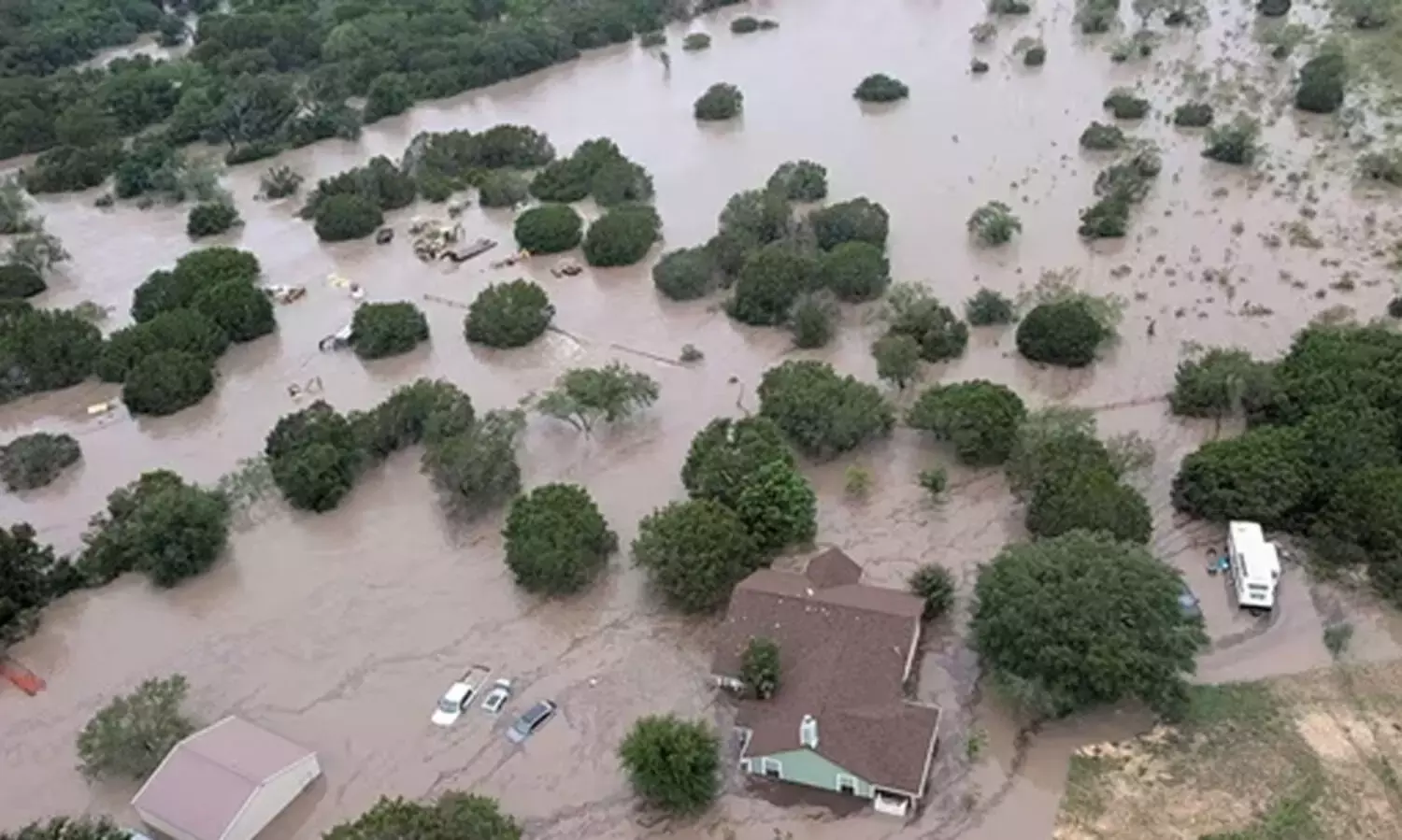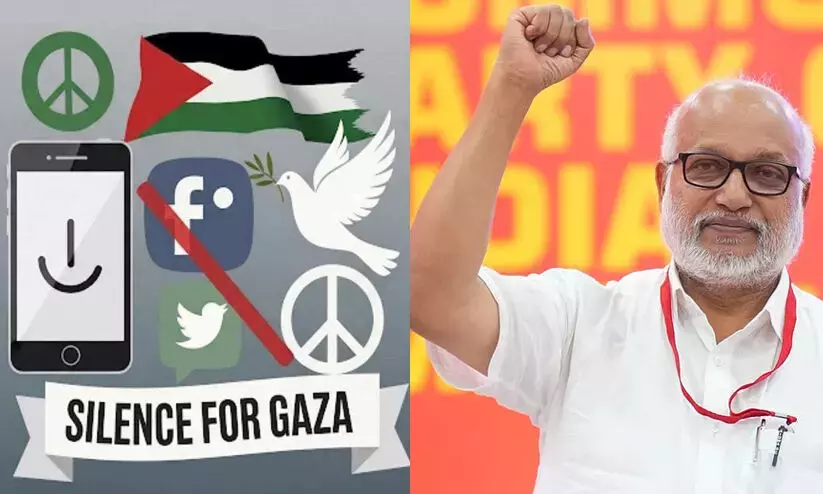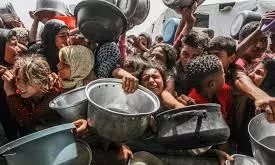
Gaza faces catastrophic hunger, UN experts warn of imminent famine amid blockade
text_fieldsGaza is now at a “critical risk of famine,” according to a new assessment by the UN-backed Integrated Food Security Phase Classification (IPC), as Israel’s blockade, now in its tenth week, continues to prevent the entry of essential goods into the war-torn region.
The IPC report released Monday warns of a sharp deterioration in food security since its last evaluation in October 2024. It states that the entire population of Gaza is facing severe levels of food insecurity, with approximately 500,000 people — around 20% of the population — at risk of starvation.
“Supplies vital for survival are either exhausted or expected to run out within weeks,” the IPC said. It emphasised that 244,000 people were already experiencing the most extreme classification of food crisis — level five, or “catastrophe/famine” — between April 1 and May 10.
The humanitarian crisis has intensified following the collapse of a temporary ceasefire in early March. Israel reimposed its total blockade shortly after, and resumed military operations that further restricted access to food, medicine, and fuel. Aid agencies on the ground say the few supplies that entered during the two-month ceasefire are nearly gone, leaving malnourished children and families with dwindling hope.
Jonathan Crickx, a UNICEF spokesperson based in southern Gaza, said humanitarian workers are now forced to divide food rations meant for one person between two children in a desperate attempt to help more people survive. “We’ve treated more than 11,000 children this year alone. We fear that without new supplies, the death toll will rise sharply in the coming weeks,” he said.
The UN’s Food and Agriculture Organization has echoed these concerns, warning that Gaza’s agricultural sector is on the verge of collapse. It called for an immediate lifting of the blockade to avoid further devastation.
The blockade, according to Israeli officials, is intended to exert pressure on Hamas to release the remaining 59 hostages taken during the October 2023 incursion into southern Israel, during which over 1,200 people were killed and 251 abducted. Last week, the final US-Israeli citizen held in Gaza was released — a 21-year-old soldier.
Since the start of the Israeli offensive, over 52,000 Palestinians have been killed and vast parts of Gaza have been reduced to rubble. Israel accuses Hamas of diverting aid and using civilians as human shields, charges the group denies.
Inside Gaza, the situation has grown dire. World Food Programme-supported bakeries have shut down due to a lack of flour and fuel. Community kitchens that once served close to a million meals daily are now closed or barely functioning. UN warehouses are empty, and food prices have skyrocketed. In some areas, basic vegetables like potatoes and tomatoes cost more than $10 per kilo.
Dr. Ahmed al-Farah of the Nasser Medical Complex in Khan Younis reported an alarming rise in child malnutrition, with up to 10 new cases daily. “We are seeing shocking levels of malnutrition in children. They need protein, but we have none. Even powdered milk is scarce,” he said.
Israel has proposed a new aid distribution system involving hubs managed by private contractors under military protection. However, the UN has refused to participate, citing concerns over its legality and effectiveness.
The IPC, which rarely declares famines and uses a strict three-part threshold to do so, found that while the first criterion — 20% of households facing extreme food shortages — had been met, the other two thresholds had not. Still, the experts warned that delaying an official famine declaration could cost lives.
In March, a similar IPC warning of “imminent famine” in northern Gaza led to a temporary increase in aid after global outrage over an Israeli airstrike that killed seven humanitarian workers. Now, aid officials fear that without immediate action, the consequences will be even more devastating.
The IPC includes over a dozen UN agencies, aid organisations, and governments. Its famine classification has previously been applied in Somalia (2011), South Sudan (2017 and 2020), and parts of Sudan’s Darfur region (2023).












